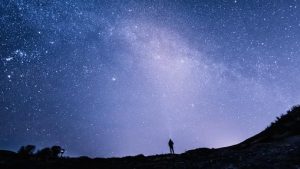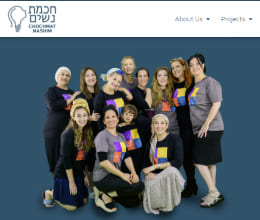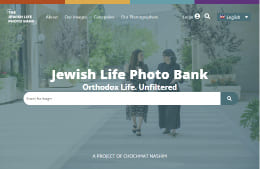
(Photo:Getty Images)
I’ve always loved the stars. I took an astronomy course at a local community college aged eight and went to Space Camp in Florida at 12. I’m sure my parents thought they had a prodigy on their hands. Alas, back in the 80s and 90s, one had to be a pilot or engineer to get a spot on the Space Shuttle — and math and I do not get along. Also, the height requirement was five foot, four inches and I fall short.
But my love for the stars never waned. Every August I try to go to a dark place and see the Perseids meteor shower but I’m usually disappointed — it’s just not dark enough to see more than a few.
This year, my husband offered to go south and make a mini trip out of it so I could see the meteors for real. Southern Israel is mostly desert — but Israel has greened the desert, and throughout the sandy Negev and Arava deserts are kibbutzim and moshavim with fields of vegetables, orchards of fruit trees, green grassy lawns and towering trees.
You can surf the sand dunes, pick berries and play with ostriches. Hikes of desert oasis abound and Nabatean cities of old still stand for you to brave the hot breeze and imagine caravans of camels crossing the desert from East to West, laden with spices.
We took my dad, who was celebrating his 77th birthday, and our two youngest and joined my sister and her family on a trip south.
In Israel, you get to learn recent history as well as ancient. Kibbutz Gvulot, where we stayed, has on-site visits to its earliest village. You can sit inside the mud brick buildings, dress in old clothing (not during coronavirus time though), make mud bricks (it’s messy!) and bake laffa bread in a taboon (clay oven) while you hear about the Jewish pioneers who purchased land from the Bedouin, worked the land, and served as lookouts on what was then the border of Egypt.
After a day in the massive kibbutz pool and a meal of “the best burgers in the south” at PUB (that’s its name) with burgers that were too big for our bellies but super yummy, we made the bricks but skipped the laffa because it was getting dark and we had stars to see.
Machtesh Ramon, a crater in the middle of the Negev where the skies are darkest, is an hour from Kibbutz Gvulot. With snacks and a blanket (it gets cool at night) we set out. Even through the windows, you can see the skies change as towns fall behind. We are so used to the lights, buildings and trees, we forget how magnificent the night sky is.
We arrived at the city of Mitzpe Ramon, which sits at the edge of the crater, to find that the city had grown tremendously. We both remarked on it as we navigated the slopes and sharp turns of the crater walls.
With the moon set to rise around midnight, we had three hours to watch shooting stars and I could not wait to get out of the car. Many people camped out at sites around the desert but certain members of our party were not up for the sleeping-in-a-tent-with-questionable-bathroom-options experience, so we just drove down into the crater and pulled over.
People with tents, mats and chairs were spread out as far as we could see, which was only as far as our headlights. We shut the lights as soon as we could, finding a spot and setting up our own mat and chair.
Jupiter and Saturn, which can be seen from most anywhere right now, were so much brighter, and the sky was filled with stars we never see. Cassiopeia, the Big Dipper and Pegasus glowed brightly, and right through the middle was the Milky Way. I asked my boys if they knew what it was and how, if it’s the galaxy in which we live, we could see it in the sky. They actually had answers (thank God for books and Magic School Bus).
There had to be hundreds if not thousands of Israelis throughout the desert looking up to see the meteor shower. Is it that they love the sky? Is it the cool desert air during the hottest weeks of the year?
I don’t know, I was too busy looking up to ask. But I know that when days are filled with news of fires in the South caused by explosive balloons from Gaza, rising coronavirus numbers, and an unknown future, sometimes looking up and seeing that we are all part of something much larger is just what we need.
Originally published in The Jewish Chronicle


